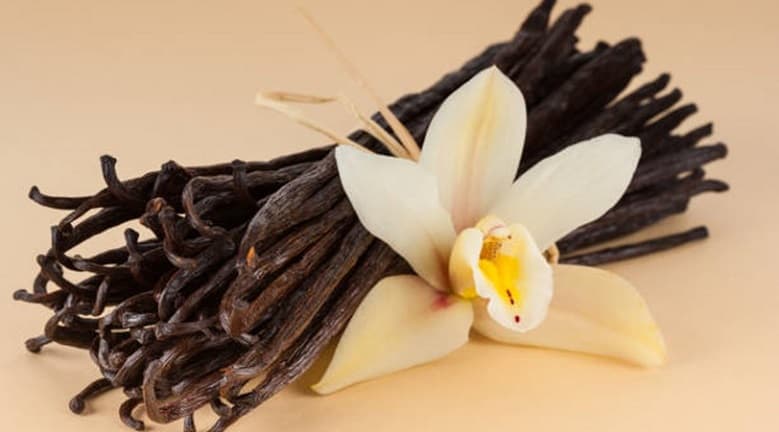Vanilla is an exotic spice from orchids native to Central America, the West Indies and northern South America. The orchid family, called Orchidaceous, requires tropical conditions to thrive. The vanilla plant is grown on tropical islands like Tahiti, French Polynesia, the Comoros Islands, Reunion, Malaysia and Indonesia, as well as within Guatemala, Costa Rica and Mexico in Central America, and on certain Caribbean islands, specifically Jamaica.
The flavor of vanilla is sweet and originates from the fruit or seed pods known as vanilla beans. Vanilla orchids are designed to grow into the pole or tree when it rises to ensure that the long seeds can be collected by those standing on the ground without ladders.
The delicate orchid blooms for just one day and, when pollinated, will develop into an extended bean. Pollination occurs naturally by an insect indigenous to Mexico. The tiny bee isn’t found anywhere else, and a method was developed to pollinate vanilla orchids manually. Due to the labor and time required to check the plants for blooming flowers and hand-pollinate them regularly, vanilla is among the costliest spices available in the world.
Following pollination, the flower fades and develops an extended seed pod. It takes months to establish. The cost of production is the manual labor needed for daily harvesting. Vanilla beans are examined each day and harvested when the pods are green and begin to turn yellow near the tips and start opening. They shrink and become black within a few hours after picking.
Longer pods are more seed-filled than shorter ones. The longest beans are of the best quality since they contain the highest amount of vanilla. The finest vanilla beans bulk measure more than 15 centimeters long and are sold at a premium cost. The beans are dried in the sun to ensure the proper development of the flavor and scent.
The most sought-after flavor that isn’t pungent. It enhances the flavor of many baked goods, desserts, ice cream and drinks. Custards, cakes, cookies, flan, puddings, and whipped cream would not be the same without vanilla. Vanilla enhances the flavor of caramel, chocolate, coffee, and many other fruits. It’s available in whole bean form as well as in the form of an alcohol extract.
Over a hundred aromatic compounds are present in vanilla beans. It is challenging, to say the least, to recreate the naturally sweet flavor. The most intense aroma and the main component is known as vanilla is vanillin. Vanilla beans usually have 2.5 per cent vanillin. Vanillin is synthesized at an industrial scale using low-cost starting materials like lignan and eugenol. Lignan is a component of wood fibers. Therefore, the pulp and paper industries provide the raw material needed for the commercial production of vanillin.
Artificial vanillin is utilized in baking as a cheap substitute for vanilla extract. Vanilla is also used to enhance toothpaste and tobacco’s flavor and fragrance cosmetics and perfumes. Vanilla is among the most expensive spices. Very few people use whole beans frequently in the home kitchen. With a marketplace flooded with cheap imitation vanilla extracts, most people view genuine vanilla as a pricey quality. However, there is no substitute for high-quality, whole vanilla beans. Their rich flavor will dramatically enhance the taste of your baked goods and desserts.
